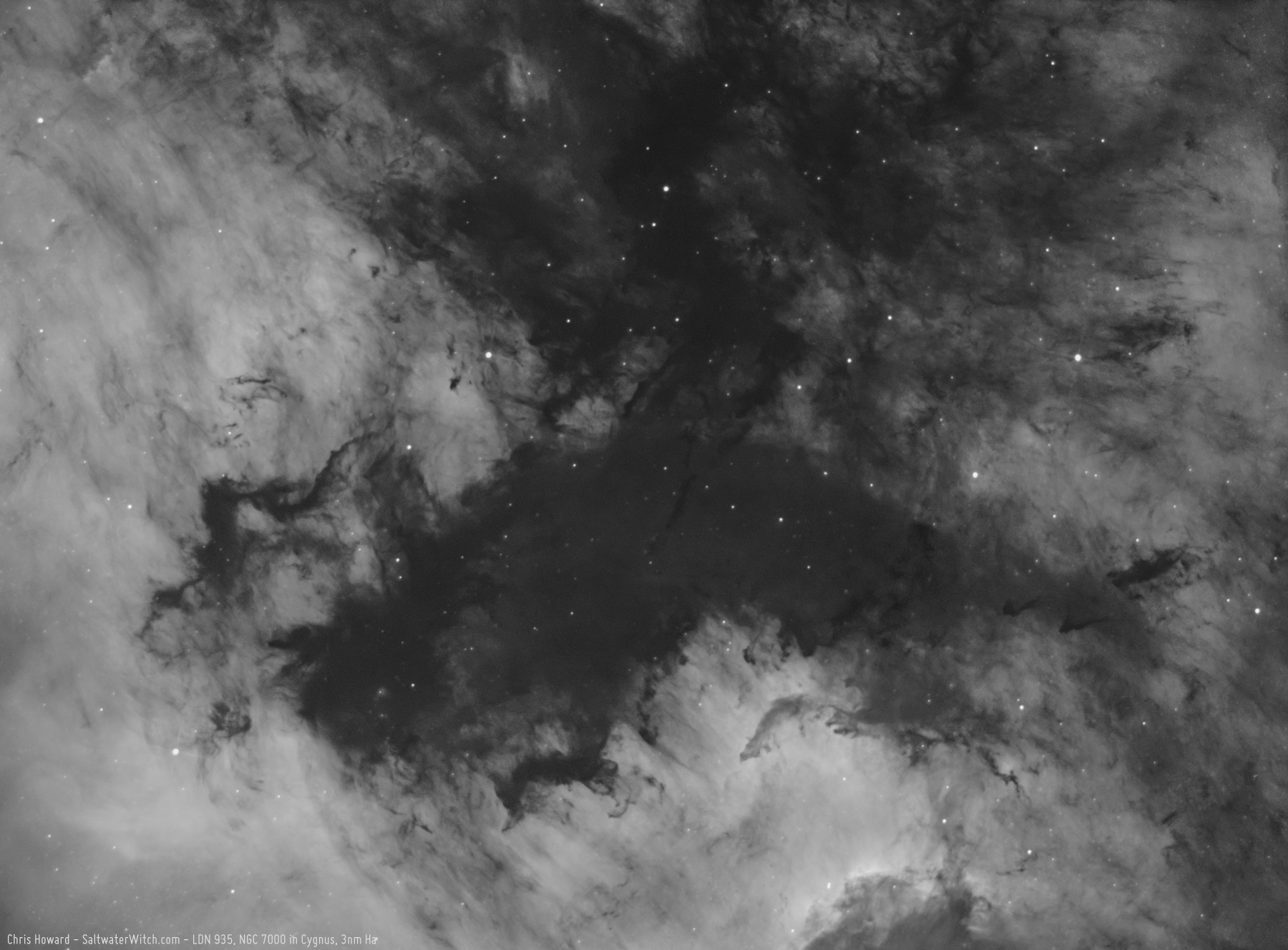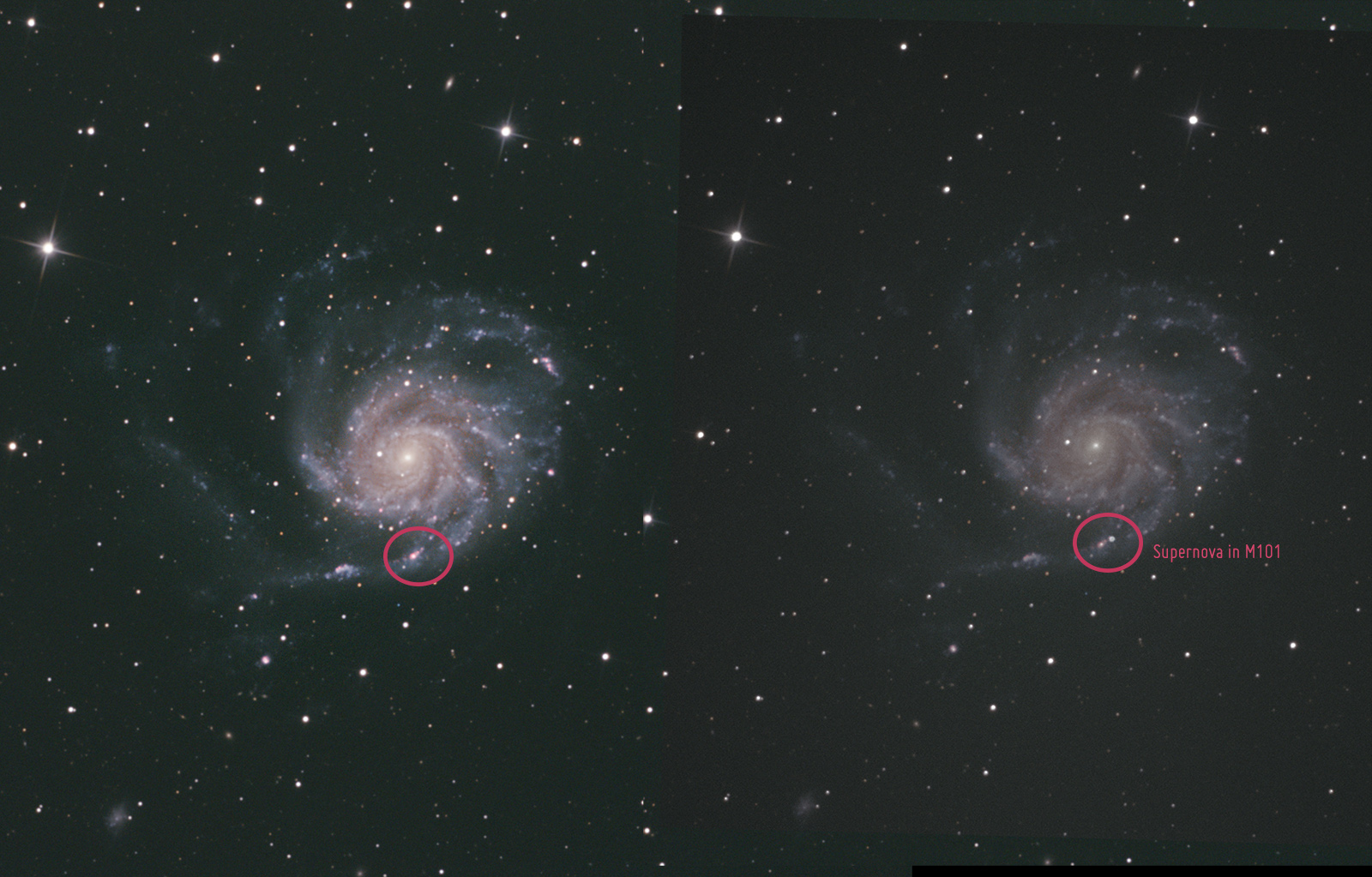Dark Nebulae in Cygnus, 3nm Ha
LDN 935, 933 (dark nebulae), the "Gulf of Mexico" region of NGC 7000, the North America Nebula in Cygnus.
Dark nebula Dobashi 2961, et al. below the North America Nebula, 3 nanometer hydrogen-alpha:

Atlas and Catalog of Dark Clouds Based on the 2 Micron All Sky Survey
Kazuhito Dobashi, Publications of the Astronomical Society of Japan, Volume 63, Issue sp1, 25 January 2011, Pages S1–S362, https://doi.org/10.1093/pasj/63.sp1.S1

Posted May 31, 2023
NGC 6888 without stars
NGC 6888, the Crescent Nebula in Cygnus (stars removed). Apertura 800mm f/4 newtonian, 28 x 300 exposures with the ZWO ASI071MC cooled to -10C, Optolong dual-band l-eXtreme filter with 7nm bandpasses at Ha and OIII, Sky-Watcher EQ6-R Pro mount, William Optics 32mm/120mm FL guide scope + ZWO ASI290MM guide camera. The Crescent is close to 5000 lightyears away, about 25 lightyears across at its widest point, roughly 237 trillion kilometers wide (150 trillion miles). The dense clouds of oxygen and hydrogen are lit up with the intense radiation of a central star; the whole structure is expanding and accelerating away energetically, very bright against the velvety bed of ionized hydrogen that spans most of the constellation Cygnus. With the stars removed from the image, NGC 6888 almost looks solid instead of a vast bubble of interstellar gas and dust.

Posted May 30, 2023
NGC 6820 (Sh2-86) in Vulpecula
Nebula NGC 6820 (Sh2-86) in the constellation Vulpecula, surrounding the open star cluster NGC 6823. 48 x 300-second subs in 3nm Hydrogen-alpha. The intense radiation from that central cluster of stars is hollowing out the nebula, pushing the gas and dust in all directions, creating pillars of trailing material where energetic star light meets dense pockets of gas, or faster cooling heavy elements with higher inertia. Everything in that rough circular area in the bottom right is accelerating away from those bright and very hot stars in the center. I believe the dark nebulae across the middle and top are part of Dobashi 2045? (I really want to know the story with that weird faintly-backlit tail of interstellar dust at the lower left. Definitely something cool going on there).
Interesting info on the formation of pillars and "elephant trunks" in nebulae:
Jonathan Mackey, Andrew J. Lim, Dynamical models for the formation of elephant trunks in H II regions, Monthly Notices of the Royal Astronomical Society, Volume 403, Issue 2, April 2010, Pages 714–730, https://doi.org/10.1111/j.1365-2966.2009.16181.x
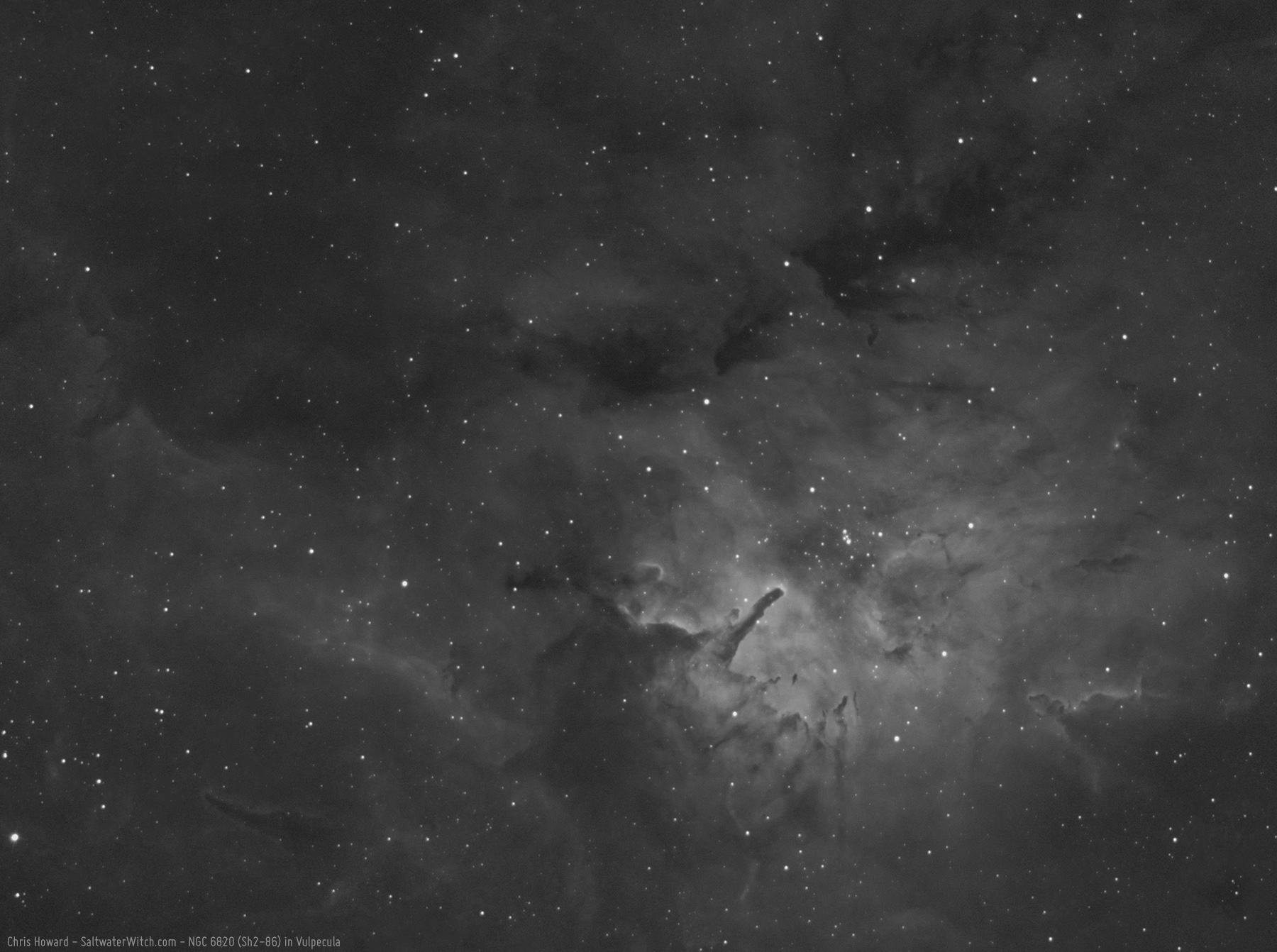
Went back last night and captured 48 subs of OIII:

Posted May 29, 2023
The Pelican in Cygnus
With the milky way swinging up in the East above 30° around 11:30 pm, I only have three to four hours of narrowband nebula imaging time. Spring is “Galaxy Season” after all, with most of the northern hemisphere night sky time directed away from our own galactic core and into the depths of the known universe. You know, where many of the other galaxies are.
The skies weren’t particularly clear last night, but good enough for some long exposure hydrogen-alpha imaging of the Pelican Nebula (IC 5070) in the constellation Cygnus. The Pelican is the next-door neighbor of NGC 7000, the North America Nebula. With an 800mm focal length and the ZWO ASI1600MM camera I can fit most of the nebula into the frame, a nice clear view of the star-forming structures on the north-facing side, the “top” of the nebula.
Notes: when you’re shooting five-minute subs, the chances of something happening during any particular exposure go way up--satellite passing through, gust of wind, unanticipated guide corrections from poor seeing, clouds, and other events that affect the image. I shot 49 subs last night and this morning, before stacking, I went meticulously through each and threw out any that had elongated stars, contrast loss (probably clouds), and other artifacts captured during the run. I ended up stacking 38 frames with dark and bias calibration frames (no flats). But that's 38 good frames. Weather: seeing and transparency were poor, and really affected guiding, but still worth spending the time to capture enough data to process. The result is fine. I suspect, the results would be worse with OIII data--OIII being in the middle of the visible part of the spectrum and is probably more susceptible to light pollution, reflection off clouds, ambient temperature changes.
The Pelican Nebula in Cygnus (IC 5070), 3nm Ha filter, 38 x 300-second exposures stacked in DSS, shot with a ZWO ASI1600MM-Pro monochrome camera running at -10C. IC 5070 is part of the larger North America nebula region, about 2600 lighyears away.
May 26 update: IC 5070 in Cygnus in HOO narrowband (Hydrogen-alpha and Oxygen 3 mapped to RGB, with OIII taking both Green and Blue channels). Here's the info on the data I captured: 38 x 300-second Ha 3nm frames, 48 x 300-second OIII 3nm frames with the ZWO ASI1600MM-Pro monochrome camera, cooled to -10C. A little over 7 total hours of data gathering for this one.

Posted May 24, 2023
The Propeller in Cygnus
The “Propeller Nebula” in Cygnus (DWB 118). Imaging notes: 46 x 300-second exposures, 3nm Ha filter, ZWO ASI1600MM-Pro monochrome camera cooled to -10C, 800mm f/4 Newtonian scope, Sky-Watcher EQ6-R Pro mount, William Optics 32mm/120mm FL guide scope + ZWO ASI290MM-Mini guide camera.
DWB 118 isn't usually called out separately from the vast nebula complex around Sadr, but 193 distinct HII regions are catalogued in the 1969 Ha survey of the Cygnus X Region. The “Propeller” is catalogued as number 118 by the authors, Dickel, Wendker, Bieritz (DWB)
Dickel, H. R., Wendker, H., & Bieritz, J. H. (1969). The Cygnus X region. V. catalogue and distances of optically visible H II regions. Astron. & Astrophys., 1, 270–280. https://articles.adsabs.harvard.edu/pdf/1969A%26A.....1..270D
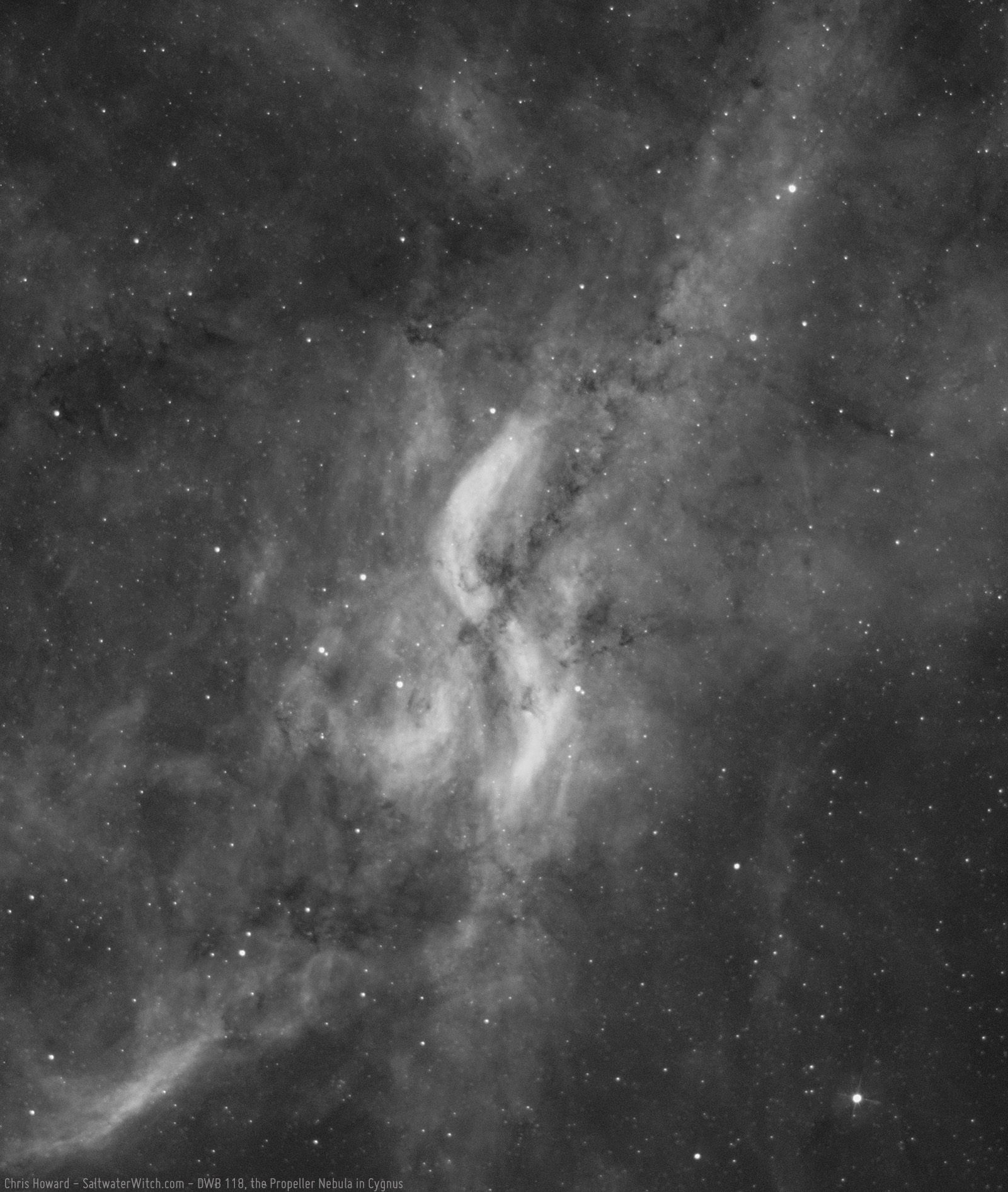
DWB 118 and surrounding area in HOO. Bi-color processing notes: you may already know that I am a fan of subtlety when it comes to color saturation, even "muted" can be used appropriately in this case. In targets like the Propeller, I think the color serves the dust. If vibrant colors are going to get in the way of showing which structures are in front or behind the dark bands of dust, then I will gladly sacrifice some color.
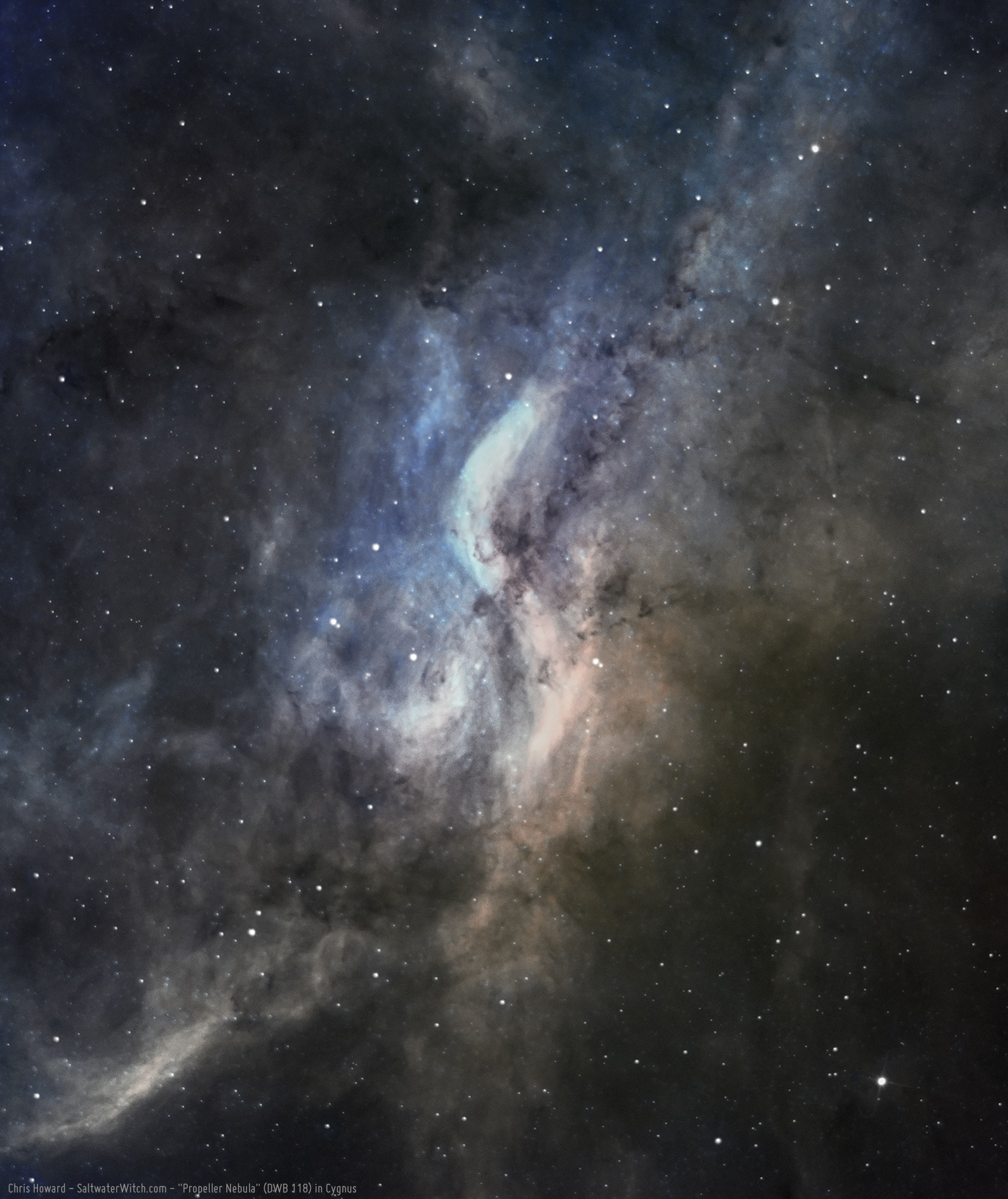
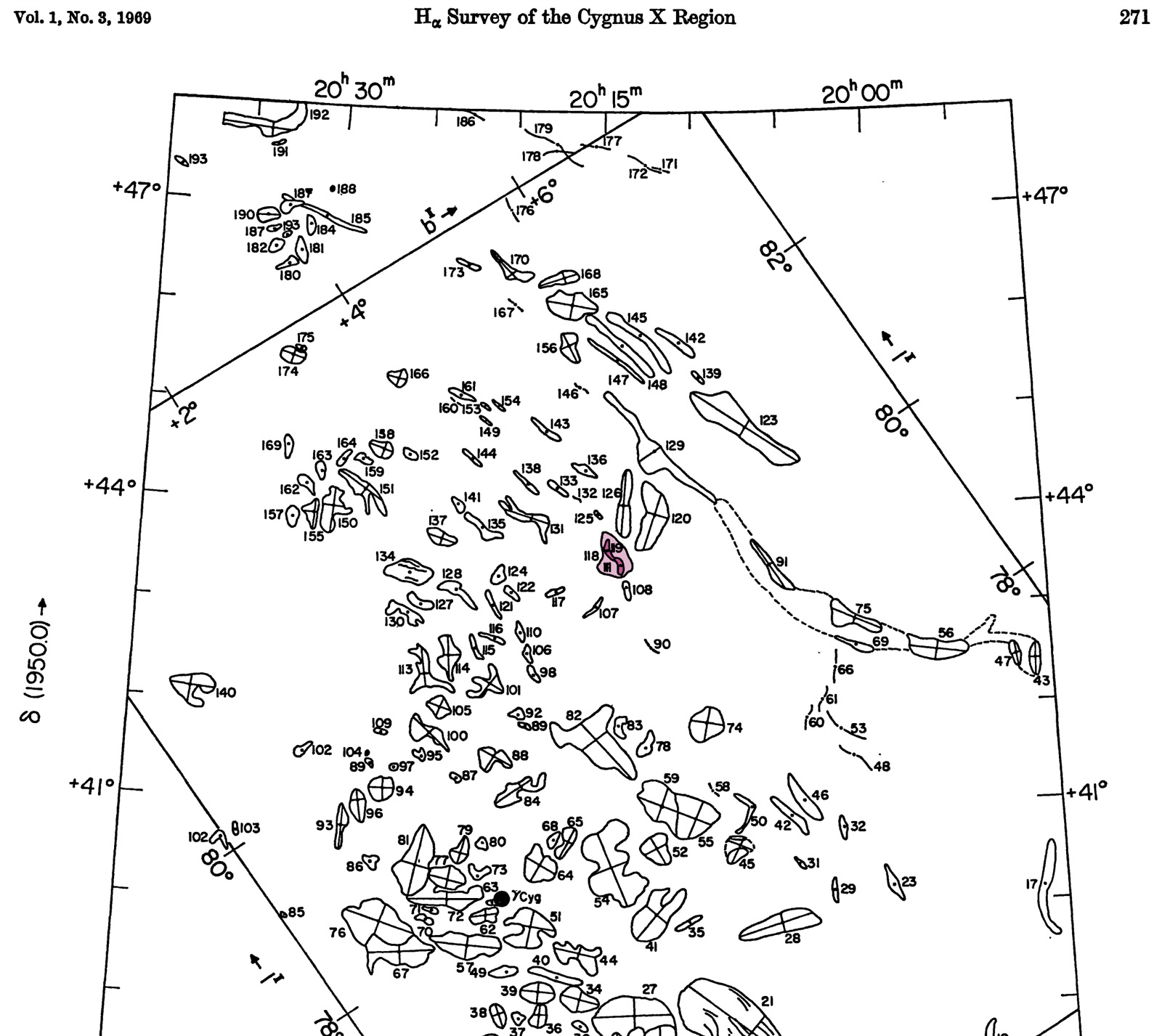
Posted May 23, 2023
Supernova in M101
On May 19th, 2023--three days ago, Japanese astronomer Koichi Itagaki discovered a supernova in M101 galaxy, 21 million lightyears away. I shot M101 last week, and tonight I took one exposure in Hydrogen-alpha (narrowband) and overlaid the images. That bright dot circled on the right is SN 2023ixf, the new supernova.
Posted May 22, 2023
NGC 6888, Crescent Nebula in Cygnus
Another night out with the Optolong l-eXtreme dual narrowband filter, and again, I'm really surprised at the color and detail captured with the two 7nm band passes, one around 504nm for OIII and the second at 656nm for hydrogen-alpha. Star colors look pretty good, and overall this is closer to true color (red and blue generally where they're supposed to be) than hubble palette SHO images. I captured 55 subs at 300 seconds (5 minutes) each, but threw out all but 28 for processing--it was really windy last night and that just throws chaos into tracking and guiding. I have been doing narrowband imaging with monochrome cameras and separate filters for each bandpass for almost a decade, and that's still my preferred method for capturing deep sky objects like the Crescent, but it's also really promising what you can capture with a cooled color camera in one imaging session.

Cropped to NGC 6888:
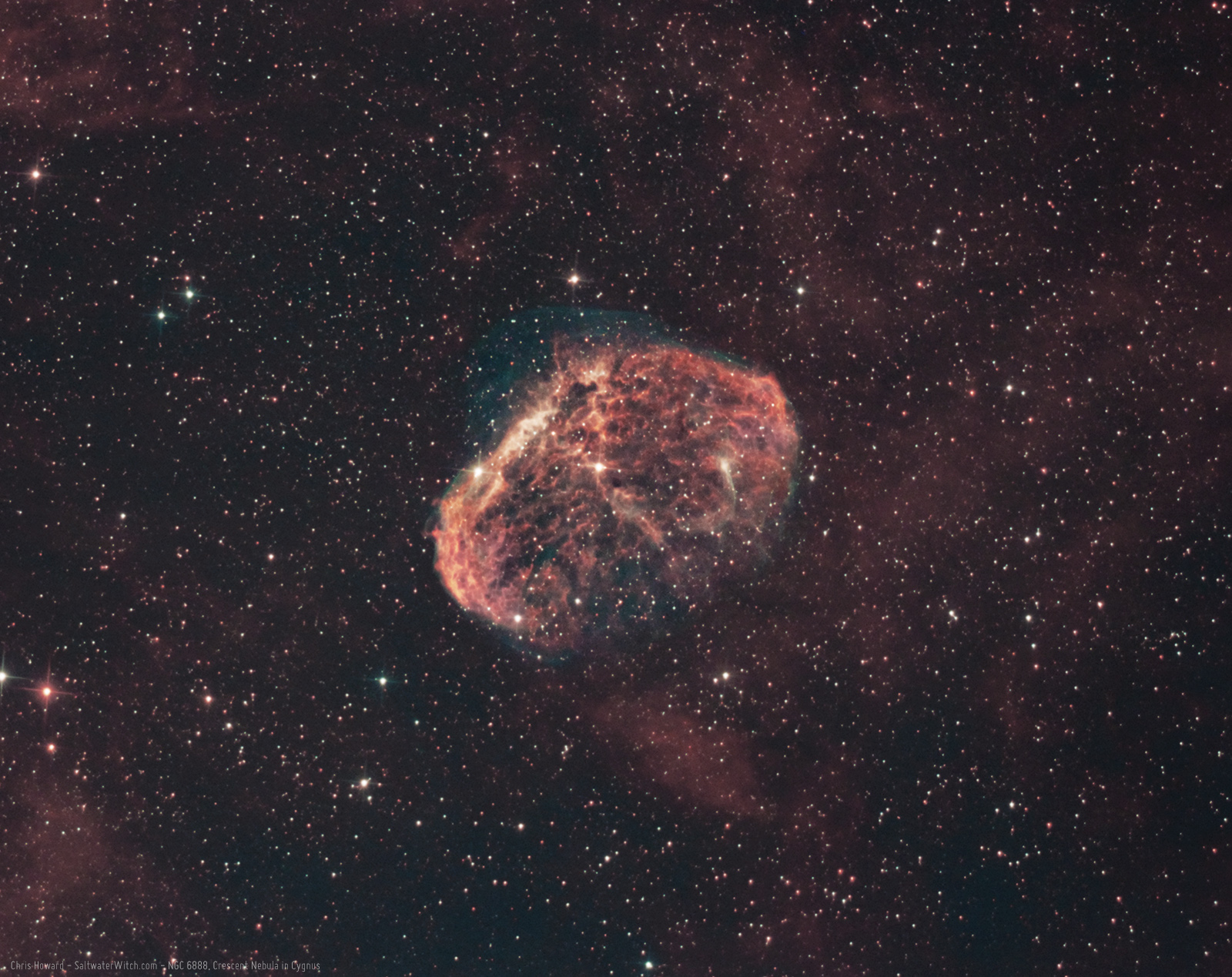
Posted May 18, 2023
M101 in Ursa Major
From my Sunday night astro imaging run: the Pinwheel Galaxy (M101, NGC 5457) is 21 million lightyears away in the constellation Ursa Major. It's quite a bit bigger than our own galaxy: a 170,000 lightyear diameter and a trillion stars. We're looking 21 million years back in time on this beautiful galaxy, tilted perfectly, face-on (or top-down?) from our perspective in the Milky Way, so that we can clearly see its spiral form, twisting dust lanes, HII regions, and other detailed structures. Space is big. And it takes that long for the light of a trillion suns to reach us from this distant galaxy. Imaging notes: about 6 hours of data, 70 x 300-second exposures with the ZWO ASI071 color camera cooled to -10C, UV/IR Cut filter, 800mm f/4 newtonian scope. With a 28.8 arc-minute apparent size, M101 is about the limit for deep sky targets with the 800mm focal length scope.
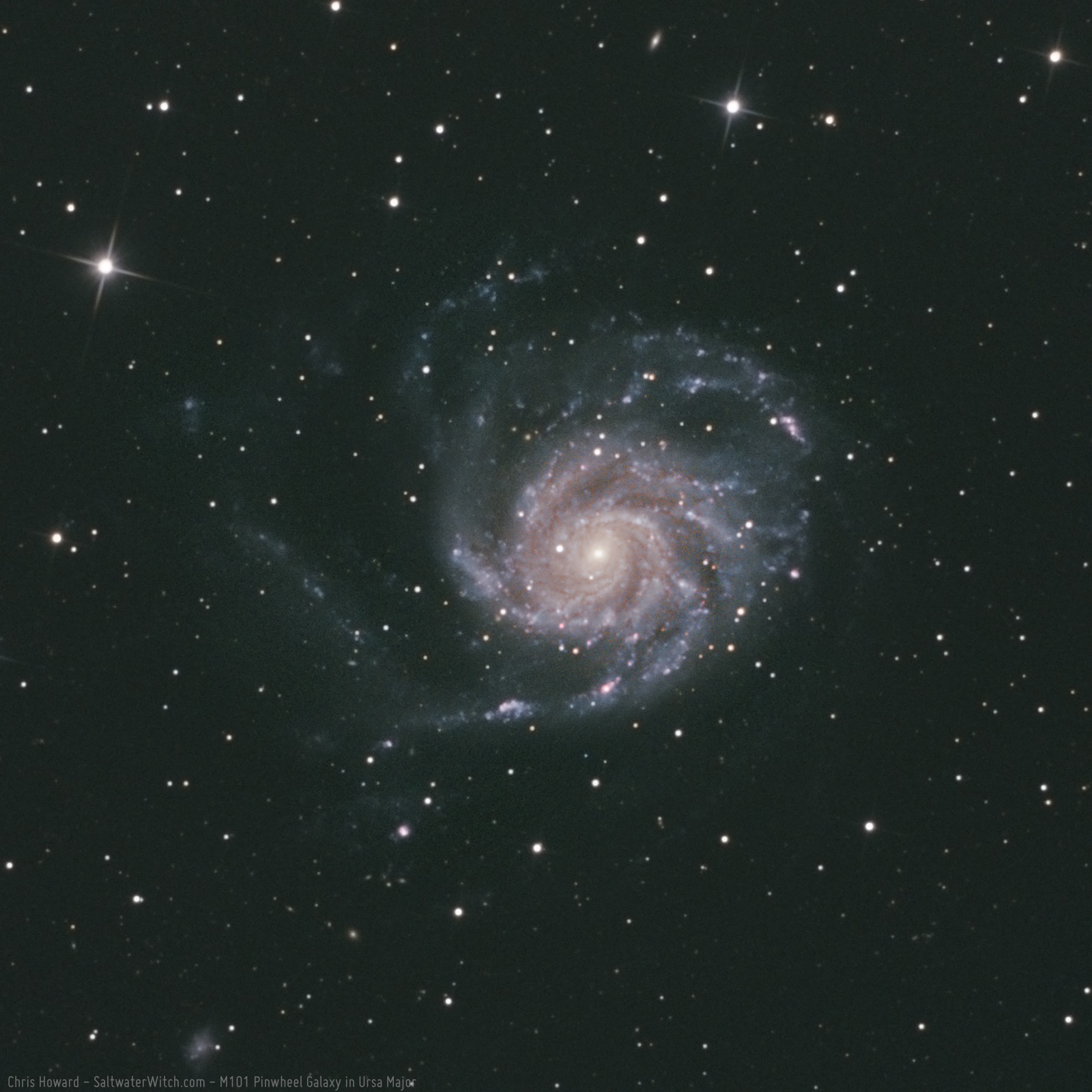
And here's the full image of M101, the Pinwheel Galaxy, slightly cropped to remove dithering artifacts at the top and side. What's crazy is there are at least a dozen other galaxies in this frame, most of them many more millions of lightyears distant than M101. All of the actual stars in this frame are within our own galaxy, the Milky Way. Everything else is another galaxy millions of lightyears away.

